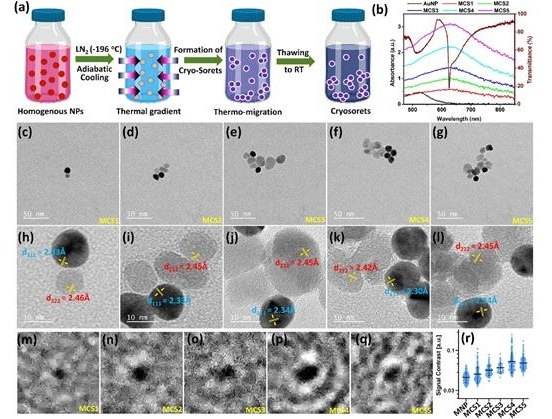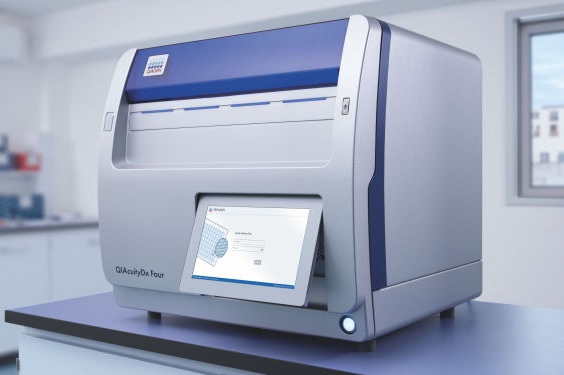Mutation Present in Genome of Some Asthma Patients Is Responsible for Resistance to Glucocorticoid Treatment
|
By LabMedica International staff writers Posted on 23 Jan 2020 |
![Image: Figure A shows the location of the lungs and airways in the body. Figure B shows a cross-section of a normal airway. Figure C shows a cross-section of an airway during asthma symptoms (Photo courtesy of [U.S.] National Institute of Health: National Heart, Lung, Blood Institute) Image: Figure A shows the location of the lungs and airways in the body. Figure B shows a cross-section of a normal airway. Figure C shows a cross-section of an airway during asthma symptoms (Photo courtesy of [U.S.] National Institute of Health: National Heart, Lung, Blood Institute)](https://globetechcdn.com/mobile_labmedica/images/stories/articles/article_images/2020-01-23/GMS-009B.jpg)
Image: Figure A shows the location of the lungs and airways in the body. Figure B shows a cross-section of a normal airway. Figure C shows a cross-section of an airway during asthma symptoms (Photo courtesy of [U.S.] National Institute of Health: National Heart, Lung, Blood Institute)
A genetic variant has been identified that causes depressed lung function among asthma patients and reduces their response to glucocorticoid treatment.
Asthma is a chronic lung disease that inflames and narrows the airways. Asthma causes recurring periods of wheezing, chest tightness, shortness of breath, and coughing. The coughing often occurs at night or early in the morning. Asthma affects people of all ages, but it most often starts during childhood. Childhood-onset and adult-onset asthma differ with respect to severity and associated syndromes.
Higher doses of oral or inhaled glucocorticoids are used to suppress various allergic, inflammatory, and autoimmune disorders. Inhaled glucocorticoids are the second-line treatment for asthma. Glucocorticoids are part of the feedback mechanism in the immune system which reduces certain aspects of immune function, such as inflammation. They are therefore used to treat diseases caused by an overactive immune system, such as allergies, asthma, autoimmune diseases, and sepsis. Glucocorticoids affect cells by binding to the glucocorticoid receptor. The activated glucocorticoid receptor-glucocorticoid complex up-regulates the expression of anti-inflammatory proteins in the nucleus and represses the expression of pro-inflammatory proteins in the cytosol by preventing the translocation of other transcription factors from the cytosol into the nucleus.
Although resistance to glucocorticoids is a major clinical problem, the underlying mechanisms are unknown. In population studies, animal models, and cell culture experiments, androgens were associated with several benefits in asthma, but neither androgen use in glucocorticoid-resistant asthma nor the genetic determinants of androgen responsiveness have been studied in humans. In this regard, investigators at the Cleveland Clinic (OH, USA) analyzed the association between genomes and lung function in more than 500 asthmatic patients who received daily oral glucocorticoids treatment or no glucocorticoids treatment at all.
Results revealed that a mutation in the HSD3B1 gene - specifically the HSD3B1(1245A) variant - was associated with poor lung function and glucocorticoid treatment resistance. The HSD3B1 gene encodes the enzyme 3-beta-hydroxysteroid dehydrogenase-1 (3-beta-HSD1), which catalyzes peripheral conversion from adrenal dehydroepiandrosterone (DHEA) to more potent androgens. It is possible that the effect of the HSD3B1(1245A) variant on lung function may be attributed to inhibition of this process.
“Glucocorticoids, which modulate systemic inflammatory response, are commonly prescribed to treat severe asthma. However, until now we have not understood why many patients do not benefit from them,” said senior author Dr. Nima Sharifi, director of the genitourinary malignancies research center at the Cleveland Clinic. “These findings make the case for genetic testing and personalized treatment and provide important information for identifying which patients should be treated using different therapies.”
The study was published in the January 13, 2020, online edition of the journal Proceedings of the [U.S.] National Academy of Sciences.
Related Links:
Cleveland Clinic
Asthma is a chronic lung disease that inflames and narrows the airways. Asthma causes recurring periods of wheezing, chest tightness, shortness of breath, and coughing. The coughing often occurs at night or early in the morning. Asthma affects people of all ages, but it most often starts during childhood. Childhood-onset and adult-onset asthma differ with respect to severity and associated syndromes.
Higher doses of oral or inhaled glucocorticoids are used to suppress various allergic, inflammatory, and autoimmune disorders. Inhaled glucocorticoids are the second-line treatment for asthma. Glucocorticoids are part of the feedback mechanism in the immune system which reduces certain aspects of immune function, such as inflammation. They are therefore used to treat diseases caused by an overactive immune system, such as allergies, asthma, autoimmune diseases, and sepsis. Glucocorticoids affect cells by binding to the glucocorticoid receptor. The activated glucocorticoid receptor-glucocorticoid complex up-regulates the expression of anti-inflammatory proteins in the nucleus and represses the expression of pro-inflammatory proteins in the cytosol by preventing the translocation of other transcription factors from the cytosol into the nucleus.
Although resistance to glucocorticoids is a major clinical problem, the underlying mechanisms are unknown. In population studies, animal models, and cell culture experiments, androgens were associated with several benefits in asthma, but neither androgen use in glucocorticoid-resistant asthma nor the genetic determinants of androgen responsiveness have been studied in humans. In this regard, investigators at the Cleveland Clinic (OH, USA) analyzed the association between genomes and lung function in more than 500 asthmatic patients who received daily oral glucocorticoids treatment or no glucocorticoids treatment at all.
Results revealed that a mutation in the HSD3B1 gene - specifically the HSD3B1(1245A) variant - was associated with poor lung function and glucocorticoid treatment resistance. The HSD3B1 gene encodes the enzyme 3-beta-hydroxysteroid dehydrogenase-1 (3-beta-HSD1), which catalyzes peripheral conversion from adrenal dehydroepiandrosterone (DHEA) to more potent androgens. It is possible that the effect of the HSD3B1(1245A) variant on lung function may be attributed to inhibition of this process.
“Glucocorticoids, which modulate systemic inflammatory response, are commonly prescribed to treat severe asthma. However, until now we have not understood why many patients do not benefit from them,” said senior author Dr. Nima Sharifi, director of the genitourinary malignancies research center at the Cleveland Clinic. “These findings make the case for genetic testing and personalized treatment and provide important information for identifying which patients should be treated using different therapies.”
The study was published in the January 13, 2020, online edition of the journal Proceedings of the [U.S.] National Academy of Sciences.
Related Links:
Cleveland Clinic
Latest Molecular Diagnostics News
- RNA-Seq Based Diagnostic Test Enhances Diagnostic Accuracy of Pediatric Leukemia
- New Technique for Measuring Acidic Glycan in Blood Simplifies Schizophrenia Diagnosis
- Injury Molecular Fingerprint Enables Real-Time Diagnostics for On-Site Treatment
- Blood Test Could Predict Likelihood of Breast Cancer Spreading to The Bone
- New Infectious Disease Analytics Platform Speeds Up Clinical Decision-Making at POC
- Genetic Test Could Predict Poor Outcomes in Lung Transplant Patients
- Breakthrough Blood Test Enables Early Pancreatic Cancer Detection
- Genomic Testing in NICU Reduces Missed Diagnoses
- New Genetic Test Improves Diabetes Prediction and Classification
- New Blood Test for Leukemia Risk Detection Could Replace Bone Marrow Sampling
- Blood Test Detects Preeclampsia Risk Months Before Symptoms Appear
- mNGS CSF Test Outperforms Traditional Microbiological Testing for Infectious Diseases
- Point-Of-Care Test to Transform Early-Stage Cervical Cancer Diagnosis
- PET/ctDNA-Guided Approach Helps Determine Lymphoma Treatment
- Next-Generation 'Agnostic Diagnostics' to Detect Respiratory Viruses at POC
- First-Ever Test of Cure for Chagas Disease Determines Treatment Effectiveness
Channels
Clinical Chemistry
view channel
New Clinical Chemistry Analyzer Designed to Meet Growing Demands of Modern Labs
A new clinical chemistry analyzer is designed to provide outstanding performance and maximum efficiency, without compromising affordability, to meet the growing demands of modern laboratories.... Read more
New Reference Measurement Procedure Standardizes Nucleic Acid Amplification Test Results
Nucleic acid amplification tests (NAATs) play a key role in diagnosing a wide range of infectious diseases. These tests are generally known for their high sensitivity and specificity, and they can be developed... Read moreHematology
view channel
Disposable Cartridge-Based Test Delivers Rapid and Accurate CBC Results
Complete Blood Count (CBC) is one of the most commonly ordered lab tests, crucial for diagnosing diseases, monitoring therapies, and conducting routine health screenings. However, more than 90% of physician... Read more
First Point-of-Care Heparin Monitoring Test Provides Results in Under 15 Minutes
Heparin dosing requires careful management to avoid both bleeding and clotting complications. In high-risk situations like extracorporeal membrane oxygenation (ECMO), mortality rates can reach about 50%,... Read moreImmunology
view channel
Blood Test Detects Organ Rejection in Heart Transplant Patients
Following a heart transplant, patients are required to undergo surgical biopsies so that physicians can assess the possibility of organ rejection. Rejection happens when the recipient’s immune system identifies... Read more
Liquid Biopsy Approach to Transform Diagnosis, Monitoring and Treatment of Lung Cancer
Lung cancer continues to be a major contributor to cancer-related deaths globally, with its biological complexity and diverse regulatory processes making diagnosis and treatment particularly difficult.... Read more
Computational Tool Exposes Hidden Cancer DNA Changes Influencing Treatment Resistance
Structural changes in tumor DNA are among the most damaging genetic alterations in cancer, yet they often go undetected, particularly when tissue samples are degraded or of low quality. These hidden genomic... Read moreMicrobiology
view channel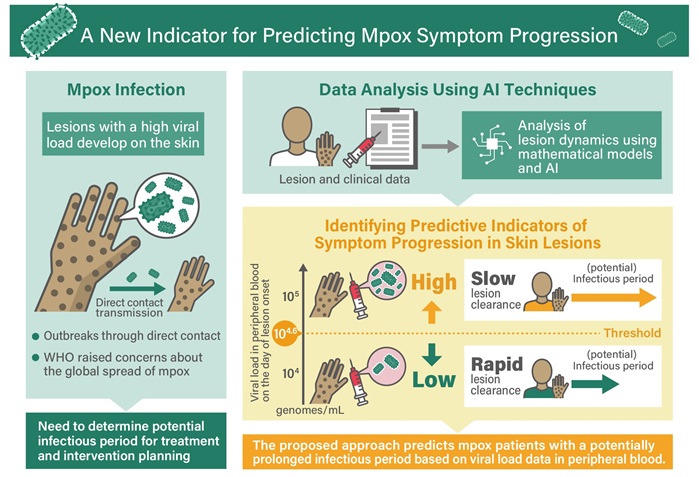
Viral Load Tests Can Help Predict Mpox Severity
Mpox is a viral infection that causes flu-like symptoms and a characteristic rash, which evolves significantly over time and varies between patients. The disease spreads mainly through direct contact with... Read more
Gut Microbiota Analysis Enables Early and Non-Invasive Detection of Gestational Diabetes
Gestational diabetes mellitus is a common metabolic disorder marked by abnormal glucose metabolism during pregnancy, typically emerging in the mid to late stages. It significantly heightens the risk of... Read morePathology
view channelAI Performs Virtual Tissue Staining at Super-Resolution
Conventional histopathology, essential for diagnosing various diseases, typically involves chemically staining tissue samples to reveal cellular structures under a microscope. This process, known as “histochemical... Read moreAI-Driven Preliminary Testing for Pancreatic Cancer Enhances Prognosis
Pancreatic cancer poses a major global health threat due to its high mortality rate, with 467,409 deaths and 510,992 new cases reported worldwide in 2022. Often referred to as the "king" of all cancers,... Read more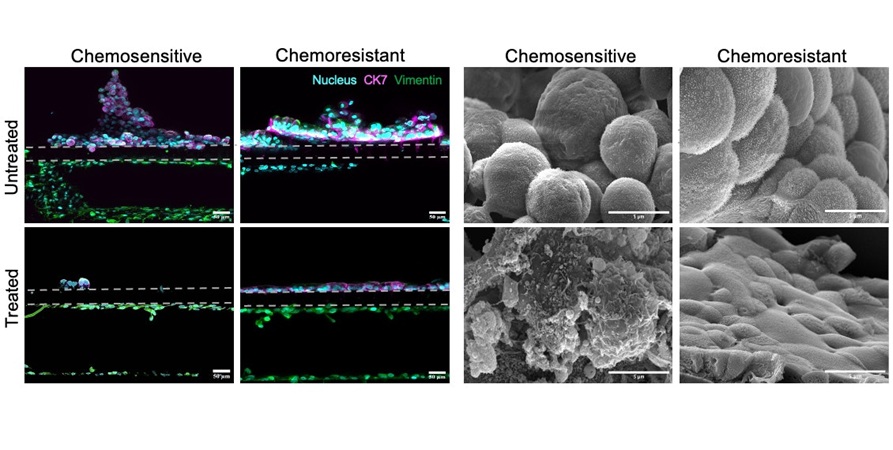
Cancer Chip Accurately Predicts Patient-Specific Chemotherapy Response
Esophageal adenocarcinoma (EAC), one of the two primary types of esophageal cancer, ranks as the sixth leading cause of cancer-related deaths worldwide and currently lacks effective targeted therapies.... Read more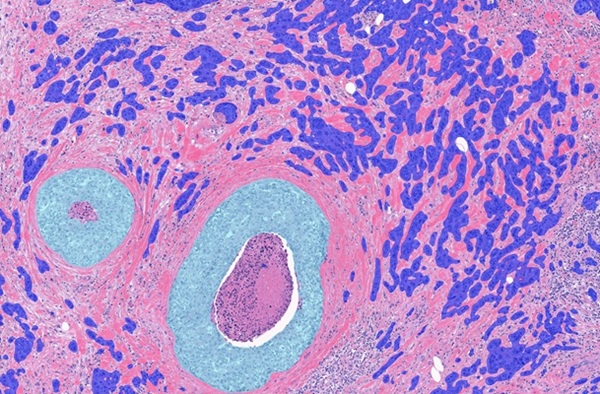
Clinical AI Solution for Automatic Breast Cancer Grading Improves Diagnostic Accuracy
Labs that use traditional image analysis methods often suffer from bottlenecks and delays. By digitizing their pathology practices, labs can streamline their work, allowing them to take on larger caseloads... Read moreTechnology
view channel
Inexpensive DNA Coated Electrode Paves Way for Disposable Diagnostics
Many people around the world still lack access to affordable, easy-to-use diagnostics for diseases like cancer, HIV, and influenza. Conventional sensors, while accurate, often rely on expensive equipment... Read more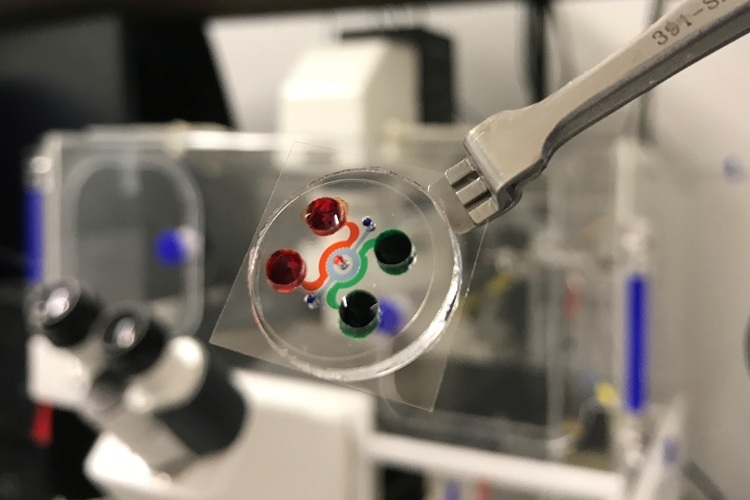
New Miniature Device to Transform Testing of Blood Cancer Treatments
Chimeric antigen receptor (CAR) T cell therapy has emerged as a groundbreaking treatment for blood cancers like leukemia, offering hope to patients when other treatments fail. However, despite its promise,... Read moreIndustry
view channel
Lunit and Microsoft Collaborate to Advance AI-Driven Cancer Diagnosis
Lunit (Seoul, South Korea) and Microsoft (Redmond, WA, USA) have entered into a collaboration to accelerate the delivery of artificial intelligence (AI)-powered healthcare solutions. In conjunction with... Read more



















